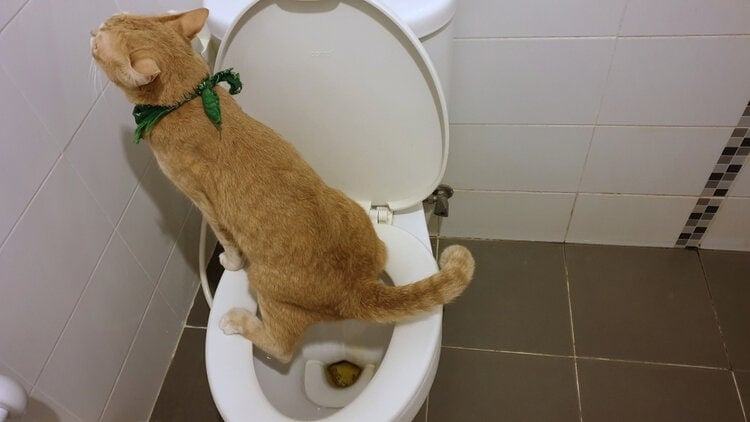How do you feel on the subject of Why you should never flush dog poop down the toilet?

When it concerns throwing away waste, specifically animal waste, many individuals commonly consider the practical choice of flushing it down the bathroom. However, this seemingly simple service can have serious consequences for the setting and public health. In this short article, we'll explore why flushing animal waste down the commode is a negative idea and offer alternate methods for proper disposal.
Introduction
Proper waste disposal is critical for keeping environmental sustainability and public health. While it might seem harmless to flush animal waste down the toilet, it can result in various issues, both for the setting and human health.
Dangers of flushing animal waste
Environmental influence
Purging animal waste presents unsafe germs and pathogens right into waterways, which can adversely affect water environments. These pathogens can pollute water sources and damage aquatic life, interrupting fragile communities.
Public health problems
Animal waste contains dangerous bacteria such as E. coli and Salmonella, which can position severe health risks to people. Purging pet waste down the commode can contaminate water supplies, leading to the spread of illness and infections.
Alternatives to flushing
Rather than purging pet waste down the commode, there are numerous alternate disposal techniques that are much more environmentally friendly and sanitary.
Composting
Composting animal waste is an environment-friendly means to throw away it. By composting, organic matter is broken down right into nutrient-rich dirt, which can be used to feed gardens and plants.
Land fill disposal
Taking care of animal waste in a landfill is one more option. While not as eco-friendly as composting, it is a more secure alternative to flushing, as it protects against the contamination of water resources.
Pet dog garbage disposal systems
There are specialized pet garbage disposal systems readily available that safely and hygienically deal with pet waste. These systems commonly use enzymes to break down waste and get rid of smells.
Steps to appropriate pet waste disposal
To make sure correct disposal of animal waste, follow these steps:
Scooping and getting waste
Regularly scoop and bag animal waste utilizing eco-friendly bags. This protects against waste from contaminating the environment.
Using designated waste bins
Dispose of bagged animal waste in marked waste containers, such as garden compost bins or garbage dump bins. Avoid flushing it down the toilet at all prices.
Cleaning up litter boxes and pet dog areas regularly
Consistently tidy litter boxes and pet dog areas to prevent the buildup of waste and microorganisms. Use pet-safe here cleaning items to maintain health.
Advantages of appropriate disposal methods
Embracing proper disposal techniques for animal waste uses several advantages:
Reduced environmental pollution
Appropriate disposal approaches decrease the threat of environmental pollution, shielding waterways and environments from contamination
Minimized danger of water contamination.
By staying clear of flushing pet waste down the toilet, the danger of water contamination is dramatically reduced, protecting public health.
Boosted hygiene and health
Proper disposal approaches advertise far better hygiene and health, creating a safer environment for both humans and animals.
Conclusion
In conclusion, flushing pet waste down the toilet is harmful to the environment and public health. By taking on alternate disposal methods and adhering to proper waste management methods, we can lessen the unfavorable effect of pet waste and contribute to a cleaner, healthier world.
What To Do With Dog Poo – The Do's And Don'ts Of Disposing Of Faeces
Dog poo bins
Some councils provide dedicated dog waste bins in popular dog-walking areas that can take dog poo that has been bagged but you can legally dispose of dog waste in any public litter bin, as long as it is securely bagged. This also applies to your wheelie bin at home.
Do not flush
Water companies do not recommend flushing dog faeces down the toilet because certain parasites can survive the water processing treatment and are potentially harmful to humans. You should also never consider flushing dog poo that has been bagged down the toilet as the bags will not break down and instead create severe blockages in the sewage system.
In the woods
The Forestry Commission promotes a ‘stick and flick’ method for dealing with waste in the woods. This means finding a stick and using it to flick any poo from off the path so that it is out of the way of other walkers. You could also bury it as long as it is not in an area where there might be livestock.
Livestock
Parasites found in dog poo can be transmitted to livestock if they inadvertently eat infected faeces that has been left on grazing land. This could result in the death of sheep or abortion in cattle so you should always make sure you pick up your dog’s waste in fields where livestock could be present.

Consistently tidy litter boxes and pet dog areas to prevent the buildup of waste and microorganisms. Use pet-safe here cleaning items to maintain health.
Advantages of appropriate disposal methods
Embracing proper disposal techniques for animal waste uses several advantages:
Reduced environmental pollution
Appropriate disposal approaches decrease the threat of environmental pollution, shielding waterways and environments from contamination
Minimized danger of water contamination.
By staying clear of flushing pet waste down the toilet, the danger of water contamination is dramatically reduced, protecting public health.
Boosted hygiene and health
Proper disposal approaches advertise far better hygiene and health, creating a safer environment for both humans and animals.
Conclusion
In conclusion, flushing pet waste down the toilet is harmful to the environment and public health. By taking on alternate disposal methods and adhering to proper waste management methods, we can lessen the unfavorable effect of pet waste and contribute to a cleaner, healthier world.
What To Do With Dog Poo – The Do's And Don'ts Of Disposing Of Faeces
Dog poo bins
Some councils provide dedicated dog waste bins in popular dog-walking areas that can take dog poo that has been bagged but you can legally dispose of dog waste in any public litter bin, as long as it is securely bagged. This also applies to your wheelie bin at home.
Do not flush
Water companies do not recommend flushing dog faeces down the toilet because certain parasites can survive the water processing treatment and are potentially harmful to humans. You should also never consider flushing dog poo that has been bagged down the toilet as the bags will not break down and instead create severe blockages in the sewage system.
In the woods
The Forestry Commission promotes a ‘stick and flick’ method for dealing with waste in the woods. This means finding a stick and using it to flick any poo from off the path so that it is out of the way of other walkers. You could also bury it as long as it is not in an area where there might be livestock.
Livestock
Parasites found in dog poo can be transmitted to livestock if they inadvertently eat infected faeces that has been left on grazing land. This could result in the death of sheep or abortion in cattle so you should always make sure you pick up your dog’s waste in fields where livestock could be present.

I'm very eager about Can You Flush Dog and Cat Poo Down the Toilet? and I really hope you enjoyed reading my blog post. For those who enjoyed reading our article if you please be sure to share it. I cherish reading our article about .
Call Today